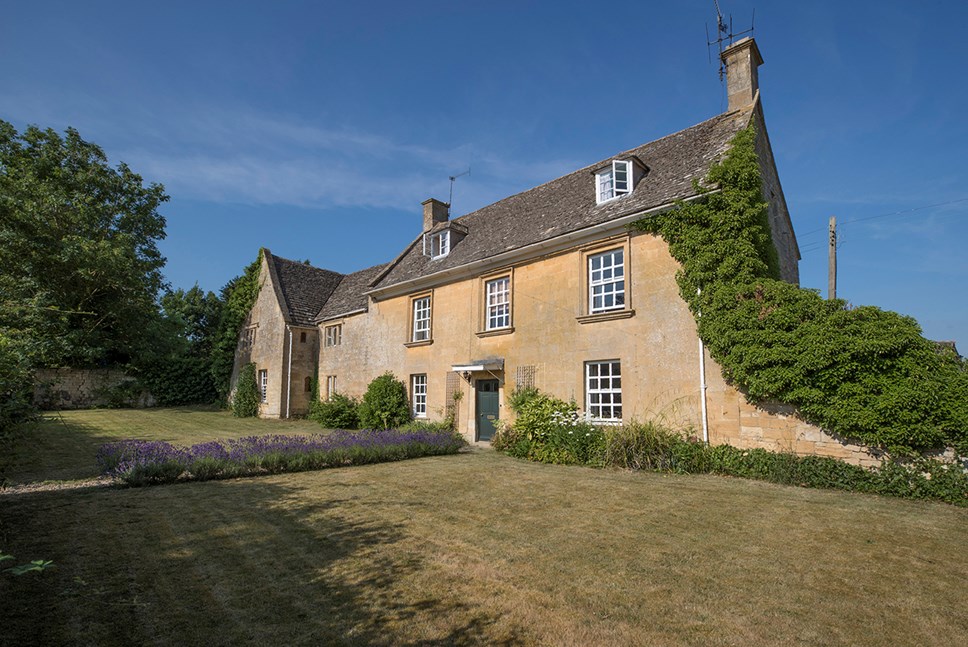
Cotswold resident prosecuted for breaking planning laws in works to a listed building
On Thursday, 14th December 2023, in Gloucester Crown Court (heard in Winchester Crown Court), Mr John Evetts of Middle Hill Farm, Saintbury, Gloucestershire, pleaded guilty to undertaking unauthorised works to a Grade II listed building.
Mr Evetts received a 12-month conditional discharge and is required to complete the outstanding works within this time. He was also ordered to contribute £6000 towards the Council’s costs and pay a victim surcharge of £22.
Between July 2020 and December 2021, Mr Evetts undertook a wide range of works to Middle Hill Farm farmhouse without consent from Cotswold District Council. The farmhouse is a Grade II listed building dating mainly from the 17th and 18th centuries and falls within both the Saintbury Conservation Area and Cotswolds Area of Outstanding National Beauty.
Listed buildings are considered nationally important and therefore have extra legal protection within the planning system. It is an offence, under the Planning (Listed Buildings and Conservation Areas) Act 1990, to undertake work that affects the character of a listed building of special architectural or historic interest.
Mr Evetts started work before gaining planning consent and then ignored the advice of the Council that such alterations would not be suitable under planning law. He also failed to provide the requested information to allow the Council to properly assess the work and continued despite being aware the work was illegal. Following a complaint from a local resident that resulted in further investigation, Mr Evetts continued to make changes despite being requested to stop.
Councillor Juliet Layton, Cabinet Member for Planning and Regulatory Services, said, “Listed building status exists to protect buildings of significant historic and architectural value.
“We have many listed buildings across the Cotswolds and our planning team is happy to work positively with anyone who owns one and wants to make changes. Listed building status does not mean no work can take place, but that it needs to be done in the right way to protect those buildings.
“In this case, we have seen someone who has not only undertaken illegal work on a listed building but ignored the advice of specialists and the authorities. We will continue to enforce breaches in planning law across the district to protect our unique heritage and preserve it for future generations.”
The prosecution was brought by Cotswold District Council’s Planning Enforcement Team with assistance from both the Council’s Counter Fraud and Enforcement Unit (CFEU) and Legal Service.
Contact Information
Cotswold District Council Communications Team
Notes to editors
Further information on the case:
In August 2020, Mr Evetts submitted a joint planning and listed building consent application to Cotswold District Council. The application detailed proposed works Mr Evetts wanted to undertake to the farmhouse, works that the application stated had already started in July 2020. It was identified by the Council that works were at an advanced stage, and works had been undertaken that were not detailed in the applications.
Mr Evetts was informed that some of the works he was proposing, and some of which had already started, would not be supported by the Council. Mr Evetts advised the Council there was a need for haste due to the impending sale of his existing home. He was requested to provide further information on other proposed works so they could be properly assessed by the Council’s Heritage Officers, however, none of the information requested by the Council was provided by Mr Evetts.
In March 2021, Cotswold District Council received a complaint from a member of the public who reported that works had continued at Middle Hill Farm farmhouse. Council Officers attended the property and confirmed that works had continued, works Mr Evetts confirmed he was aware were ‘illegal’. Mr Evetts disagreed with the expert opinion of the Council’s heritage officer, and also that of an independent heritage expert, that the works he had undertaken at the property had caused harm to the historical significance of the property. Despite several requests to stop the work, works continued at the property.
After a protracted investigation, Mr Evetts pleaded guilty to removing a wall attached to the southeast corner of the farmhouse and creating a double-door width opening near the entrance lobby, works that affected the building’s character as a building of special architectural or historic interest.
Further information on Listed Buildings from Historic England:
Listed buildings are considered nationally important and therefore have extra legal protection within the planning system. A listing marks and celebrates a building's special architectural and historic interest, and also brings it under the consideration of the planning system, so that it can be protected for future generations.
The older a building is, and the fewer the surviving examples of its kind, the more likely it is to be listed. A listing does not freeze a building in time, it simply means that listed building consent must be applied for in order to make any changes to a building's interior and exterior that affect the 'special architectural or historic interest', of their home. Only a suitably qualified heritage expert can determine whether works can affect a building's character as a building of special architectural or historic interest.
If you are unsure if your building is listed you can make enquiries with Historic England and your Local Authority.
